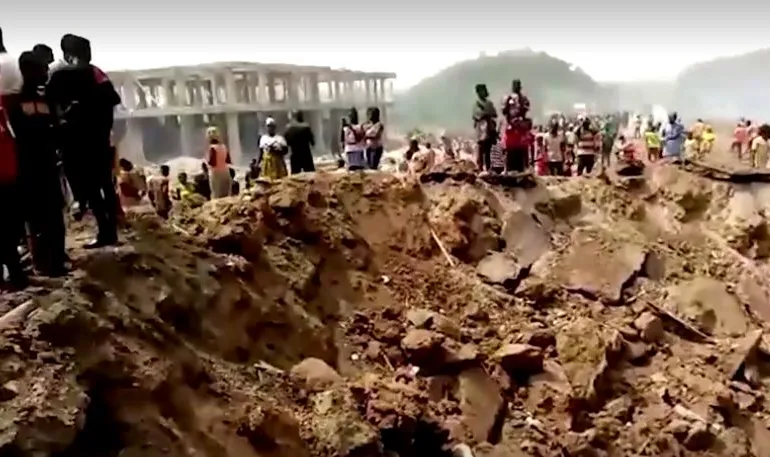At least six people are feared dead and several others among the illegally mining community trapped underground following a suspected blast at the abandoned Levels 8 and 9 of the Bogoso-Prestea Mine in Ghana’s Western Region.
The incident occurred on Tuesday afternoon when a noxious smoke—likely triggered by an unauthorised explosion—filled the disused shaft and reportedly suffocated miners who had entered the site.
Eyewitnesses said the underground explosion occurred within an abandoned concession formerly operated by Heath Goldfields.
The area has become a hotspot for illegal mining (commonly referred to as “galamsey”), with men entering remote tunnels deep beneath the surface in search of gold. Several bodies have been recovered—four confirmed at the time of reporting—and the total death toll remains uncertain, with some community sources suggesting up to eleven or more lives may have been lost.
The state mining regulator and law-enforcement agencies face mounting criticism for their inability to curb illegal incursions into disused mines and prevent tragedies of this kind.
Community members say these underground shafts, long abandoned by commercial miners, provide deep, poorly ventilated and risky environments where illegal miners proceed with little oversight.
In this incident, the probable cause of death is asphyxiation caused by carbon-rich gases filling the tunnel after the blast.
The difficulty in establishing the full scale of the disaster lies in the clandestine nature of the operations.
Because the miners entered the site illegally, their names were not registered and their companions were themselves at risk of prosecution if found.
This complicates rescue efforts and delays official tallies of casualties.
Local rescue teams continue to monitor gas levels in the shafts and attempt safe retrieval of anybody trapped, though operations remain hazardous.
Apart from the tragic human cost, this event has renewed debate about the economics and ethics of informal mining in Ghana.
Analysts argue that while illegal mining persists because of weak formal employment opportunities, poor regulation and gaps in mine closure supervision mean that abandoned shafts become death traps.
In the Bogoso region, which has a long mining history and a patchwork of active and dormant operations, oversight is said to be particularly challenging.
Authorities have yet to issue a full official statement, but the mining sector’s stakeholder groups expect mandatory investigations into how the abandoned shaft was accessed, whether any explosion had been triggered intentionally by the illegal miners, and whether the company formerly holding the concession left the site in a safe condition.
Supervisory lapses—particularly around sealing of deep underground workings and monitoring for unauthorised entry—may form part of the post-incident review.
The incident is a sharp reminder that mining risks extend far beyond major accidents in active operations. The least visible sits where regulations are weakest: abandoned tunnels, unmonitored shafts, and informal miners navigating lethal hazards without safety equipment.
If the death toll rises further, the Bogoso-Prestea tragedy may push urgent calls for tighter enforcement, better reclamation of old mines, and more sustainable livelihood alternatives for communities drawn into underground gold extraction.






